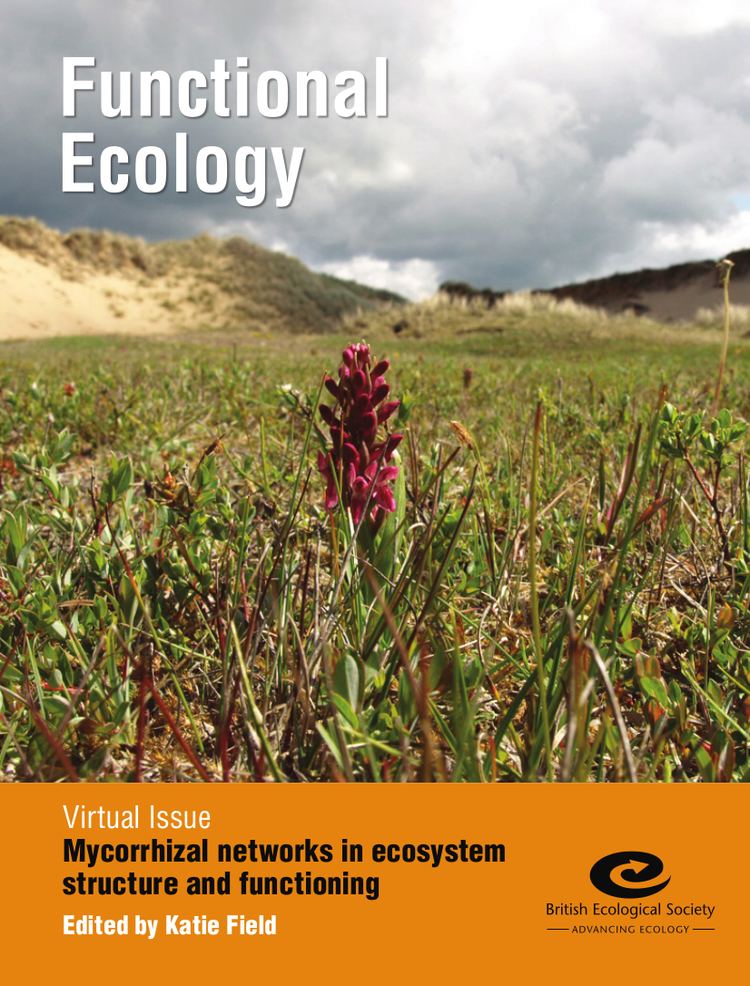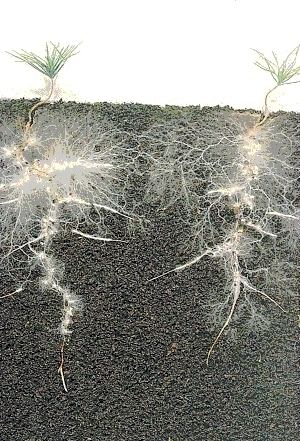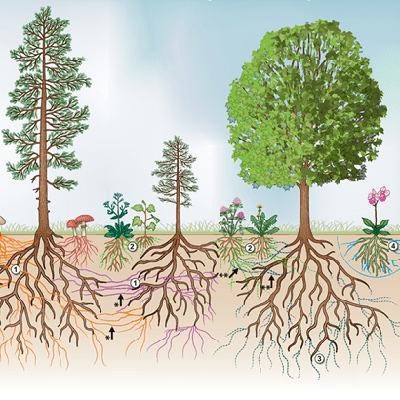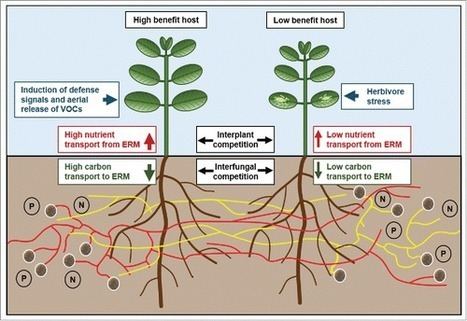Mycorrhizal networks (also known as common mycorrhizal networks, CMN, the "Wood Wide Web") are underground hyphal networks created by mycorrhizal fungi that connect individual plants together and transfer water, carbon, nitrogen, and other nutrients and minerals. The formation of these networks is context dependent, and can be influenced by factors such as soil fertility, resource availability, host or myco-symbiont genotype, disturbance and seasonal variation.
Contents
- Substances transferred through mycorrhizal networks
- Types of mycorrhizal networks
- Benefits of mycorrhizal networks for plants
- Mycorrhizal networks and mycoheterotrophic and mixotrophic plants
- Importance of mycorrhizal networks at the forest community level
- References

Substances transferred through mycorrhizal networks

Several studies have demonstrated that mycorrhizal networks can transport carbon, phosphorus, nitrogen, water, defense compounds, and allelochemicals from plant to plant. The flux of nutrients and water through hyphal networks has been proposed to be driven by a source-sink model, where plants growing under conditions of relatively high resource availability (e.g., high light or high nitrogen environments) transfer carbon or nutrients to plants located in less favorable conditions. A common example is the transfer of carbon from plants with leaves located in high light conditions in the forest canopy, to plants located in the shaded understory where light availability limits photosynthesis.
Types of mycorrhizal networks
There are two main types of mycorrhizal networks: arbuscular mycorrhizal networks and ectomycorrhizal networks.

Benefits of mycorrhizal networks for plants

—Several positive effects of mycorrhizal networks on plants have been reported. These include increase establishment success, higher growth rate and survivorship of seedlings; improved inoculum availability for mycorrhizal infection; transfer of water, carbon, nitrogen and other limiting resources increasing the probability for colonization in less favorable conditions. These benefits have also been identified as the primary drivers of positive interactions and feedbacks between plants and mycorrhizal fungi that influence plant species abundance
Mycorrhizal networks and mycoheterotrophic and mixotrophic plants
Mycoheterotrophic plants are plants that are unable to photosynthesize and instead rely on carbon transfer from mycorrhizal networks as their main source of energy. This group of plants includes about 400 species. Some families that include mycotrophic species are: Ericaceae, Orchidaceae, Monotropaceae, and Gentianaceae. In addition, partially mycoheterotrophic ('mixotrophic') plants also benefit from energy transfer via hyphal networks. These plants have fully developed leaves but usually live in very nutrient and light limited environments that restrict their ability to photosynthesize.
Importance of mycorrhizal networks at the forest community level
Connection to mycorrhizal networks creates positive feedbacks between adult trees and seedlings of the same species and can disproportionally increase the abundance of a single species, potentially resulting in monodominance. Monodominance occurs where a single tree species accounts for the majority of individuals in a forest stand. McGuire (2007), working with the monodominant tree Dicymbe corymbosa in Guyana demonstrated that seedlings with access to mycorrhizal networks had higher survival, number of leaves, and height than seedlings isolated from the ectomycorrhizal networks.
